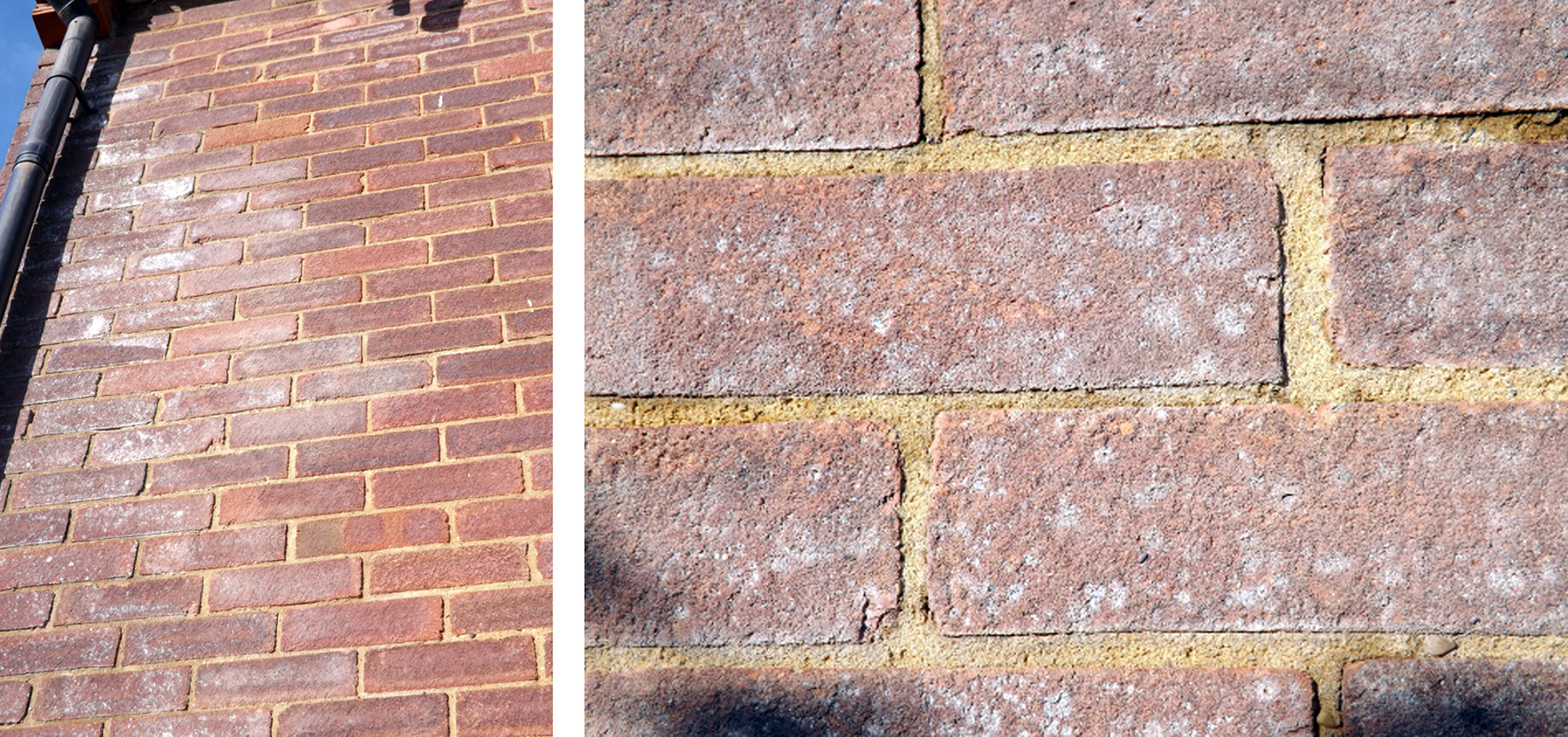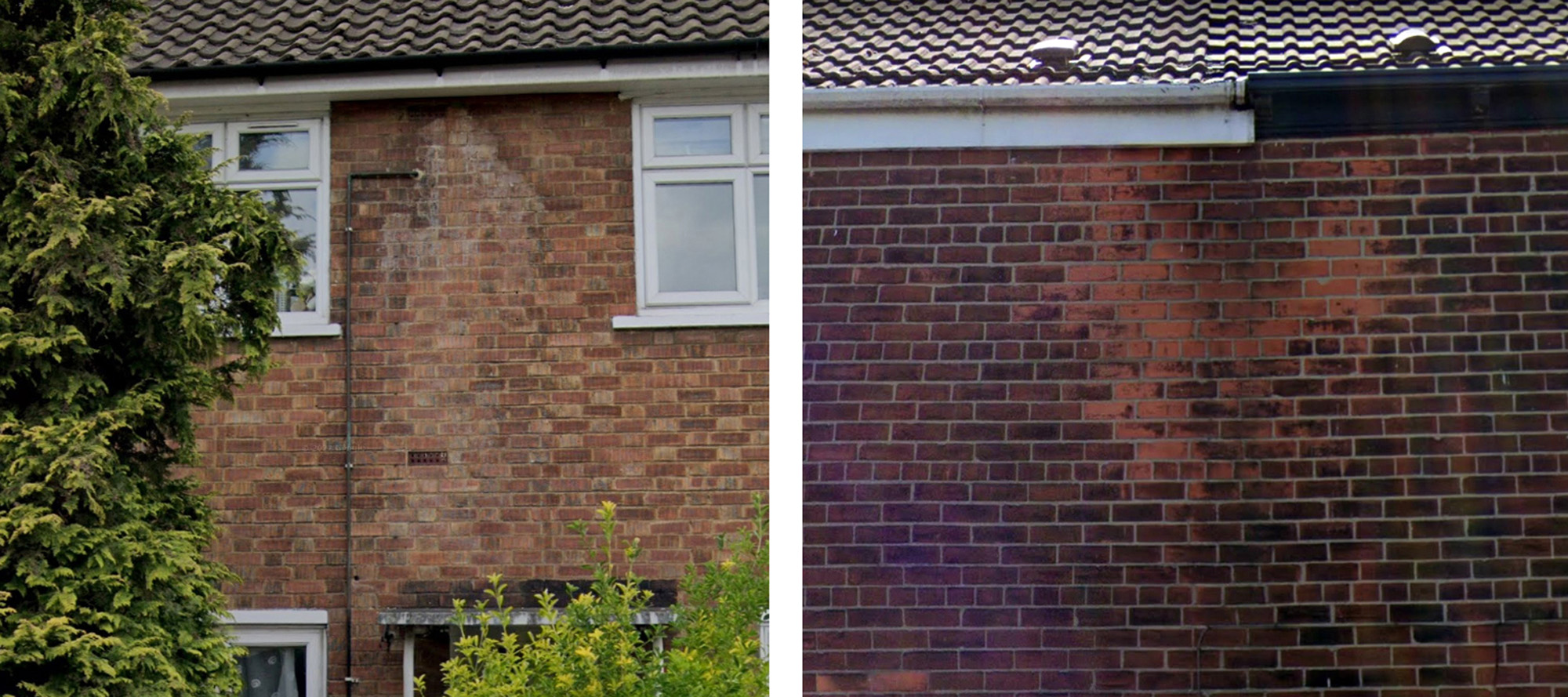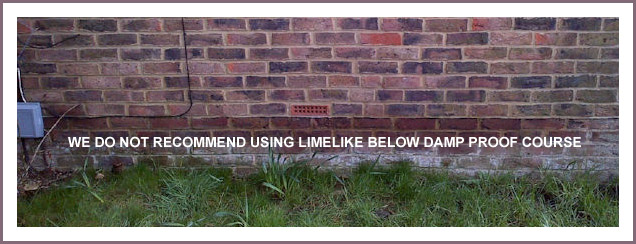Limitations
LimeLike is a natural mineral product and works by fusing to the available silica in the clay of the brick. Some brick types may not be compatible, so it is important to try our sample sachets first.
If the brickwork has any surface contaminants then the product may not be able to fix to the surface.
TRAPPED ORGANICS If your house is surrounded by trees and foliage and you have a textured brick, it is common to find growths such as algae, lichens and moss trapped in the surface crevices and folds.LimeLike will not attach to these surfaces, so the bricks will need to be cleaned to remove the contaminants to expose the surface of the brick. However, you need to ensure that you do not destroy the surface of the brick, or the mortar, in your cleaning attempts. Please seek the advice of a professional cleaning company if you are unsure.
If your house is surrounded by trees and foliage and you have a textured brick, it is common to find growths such as algae, lichens and moss trapped in the surface crevices and folds.LimeLike will not attach to these surfaces, so the bricks will need to be cleaned to remove the contaminants to expose the surface of the brick. However, you need to ensure that you do not destroy the surface of the brick, or the mortar, in your cleaning attempts. Please seek the advice of a professional cleaning company if you are unsure.
 As you can see from the images above, if you attempt to apply LimeLike over grime or trapped organics then the results will not be durable and the effects will be very unpredictable. Please do not apply our products over contaminated brickwork or masonry.
As you can see from the images above, if you attempt to apply LimeLike over grime or trapped organics then the results will not be durable and the effects will be very unpredictable. Please do not apply our products over contaminated brickwork or masonry.
 These bricks have a combination of soluble salts and lichen. This elevation has been exposed to the weather and the mortar is soft and eroding.
These bricks have a combination of soluble salts and lichen. This elevation has been exposed to the weather and the mortar is soft and eroding.
LimeLike will not attach to lichen or heavily salted brickwork. LimeLike will not attach sufficiently to any loose or friable mortar or brick.
 Please do not attempt to cover unsightly contaminated brickwork with LimeLike. Brickwork that has been subjected to years of neglect may also show signs of delamination and frost attack.
Please do not attempt to cover unsightly contaminated brickwork with LimeLike. Brickwork that has been subjected to years of neglect may also show signs of delamination and frost attack.
PRESSURE WASHING Brickwork with a moderate amount of trapped organics and surface grime can be effectively cleaned using a standard household pressure washer.
Brickwork with a moderate amount of trapped organics and surface grime can be effectively cleaned using a standard household pressure washer.
You should use a fan-jet and do not hold the lance too close to the brickwork, you need to be at a distance that covers the width of the brickface and the mortar.
Most brickwork looks good when wet, so you need to keep to a particular pattern to ensure you cover all the area of the brickwork. Start from the top and snake your way gradually down the wall, then repeat to the next strip.
Once you have cleaned the brickwork you need to let it thoroughly dry out (at least 24 hours depending on weather) prior to applying LimeLike.
BELOW DAMP PROOF COURSE (DPC)
 Bricks below a damp proof course (DPC) will have significantly higher levels of moisture and salts. If these levels are too high then LimeLike will not be able to bond sufficiently to the surface. Many houses use a different brick type and colour below a DPC, so it will not look odd if you do not do those.
Bricks below a damp proof course (DPC) will have significantly higher levels of moisture and salts. If these levels are too high then LimeLike will not be able to bond sufficiently to the surface. Many houses use a different brick type and colour below a DPC, so it will not look odd if you do not do those.
In older buildings which may not have a DPC, it is common to see chemical injection DPC inserted retrospectively.
 A series of holes are drilled into the wall at low level, the number and pattern of which is determined by the construction of the wall and its thickness.
A series of holes are drilled into the wall at low level, the number and pattern of which is determined by the construction of the wall and its thickness.
High and low pressure injection can then used to introduce a water-repellent chemical fluid that penetrates across the wall and between the holes forming a continuous barrier. However, this can also stop our product fixing to the surace of the brick. LimeLike requires natual absoprtion of the brick.
If you are applying LimeLike below a damp proof course, please carry this out when the wall is at its driest. These areas may require reapplying in the future.
 Any areas of brickwork that are subjected to higher levels of moisture and are prone to frost attack can loose some of their surface and take LimeLike with it. These areas should be wire brushed and LimeLike can be applied in the warmer drier months.
Any areas of brickwork that are subjected to higher levels of moisture and are prone to frost attack can loose some of their surface and take LimeLike with it. These areas should be wire brushed and LimeLike can be applied in the warmer drier months.
Some damp proof courses may have been compromised and may not be working effectively. Please check any suspected areas using a moisture meter to ensure the bricks are dry.